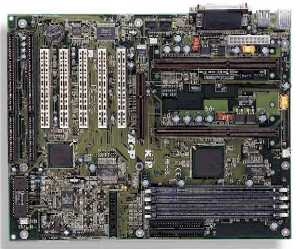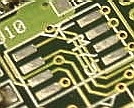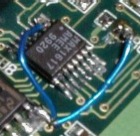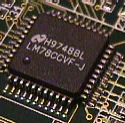Asus P2B-DS
 Abit BP6
Abit BP6
EPoX KP6-BS
Shuttle HOT-649A
Tyan S1832DL
Tech Talk
Dual Celeron
UDMA66 vs SCSI
Intel CPU Fan Hack
LVS SCSI
CPU Core Temp.
 |
|||||||||||||||||||||||
EPoX KP6-BSFeels like doing modification for your street vehicle?by Derek Kwan
 EPoX's KP6-BS is target
as a low cost dual slot 1 motherboard for general users when you try to comapre with
the big brothers like Asus's P2B-D. The board that we bought is DOA (Dead On Arrival).
Ok... it is not complete dead, is just has no power to the chassis fan connector.
And even after a month, we still can't get a replacement from the supplier. KB6-BS
is a ATX form factor motherboard that has 4 DIMM slot, a 2X AGP slot, 5 PCI and 2 ISA
slot (one PCI/ISA share). The four DIMM slot can hold up to 1GB of SDRAM or EDO memory
for 66MHz FSB, of course no mixing of memory type, just in case you asked. But if you
would like ECC support, you might want to use EDO memory instead, beacuse this
option is expensive for SDRAM. With the tweaking in the BIOS, you might have luck
to make the memory runs at 83MHz bus but don't have too much hope at 100MHz. EPoX's KP6-BS is target
as a low cost dual slot 1 motherboard for general users when you try to comapre with
the big brothers like Asus's P2B-D. The board that we bought is DOA (Dead On Arrival).
Ok... it is not complete dead, is just has no power to the chassis fan connector.
And even after a month, we still can't get a replacement from the supplier. KB6-BS
is a ATX form factor motherboard that has 4 DIMM slot, a 2X AGP slot, 5 PCI and 2 ISA
slot (one PCI/ISA share). The four DIMM slot can hold up to 1GB of SDRAM or EDO memory
for 66MHz FSB, of course no mixing of memory type, just in case you asked. But if you
would like ECC support, you might want to use EDO memory instead, beacuse this
option is expensive for SDRAM. With the tweaking in the BIOS, you might have luck
to make the memory runs at 83MHz bus but don't have too much hope at 100MHz.
The board also comes standard with dual UDMA/33 channel for support up to four EIDE devices. If you would like to hook up your UDMA/66 EIDE drives, you will need to get yourself a controller like ABIT's HOTROD 66 PCI UDMA/66 controller.
During our testing, we have found one annoying bug with the KP6-BS motherboard. The soft power button doesn't work as expacted. This seems to be a very well know issue on the net, but after 2 months we still didn't receive any answers from EPoX tech support on how to fix it or even if there are any plans to fix this in the next BIOS release. From various newsgroup, seems like in order for the power off button to turn off power instantly it is depends on a combination of setting in the CMOS as well as a jumper setting. In short, it is not as easy as you think and is not documented anywhere. And even worst, there is no guarantee it work everytime. Some people even went futher to modify their motherboard to fix this problem because EPoX tech support just can't help and people are getting very anoying about this problem. I hope EPoX is reading this and will have a fix come out soon. (Latest BIOS release is 20/05/99 at the time we write). Also worth mentioning is the newer KP6-BS now using 2MB Flash BIOS and we have been asking for EPoX to ship us a new chip for testing and we asked EPoX if this 2MB version will fix the power off problem, but so far no respond yet. Some rumors saying removing C113 (make sure it is a surface mount cap, not C117 Electrolityc cap which is close by) will fix this power off problem. We have also noticed beside the power off problem there is another potential problem, the capacitors EC13 (next to L10, behind Primary Slot1) & EC27 (Next to L11, behind Secondary Slot1) for the CPU switching power supply are getting pretty hot (I am afraid the the cap might explode if it gets too hot). That sounds like a problem (or maybe poor design) in the switching power supply for the CPU according to someone who is designing power supply. Normally capacitors should not even get warm.
EPoX KP6-BS is technically speaking a very good motherboard (also gives the fastest memory access speed among all board that we have tested). But as for customer services and technical support, it is below expiation.
Overall Score:
|



